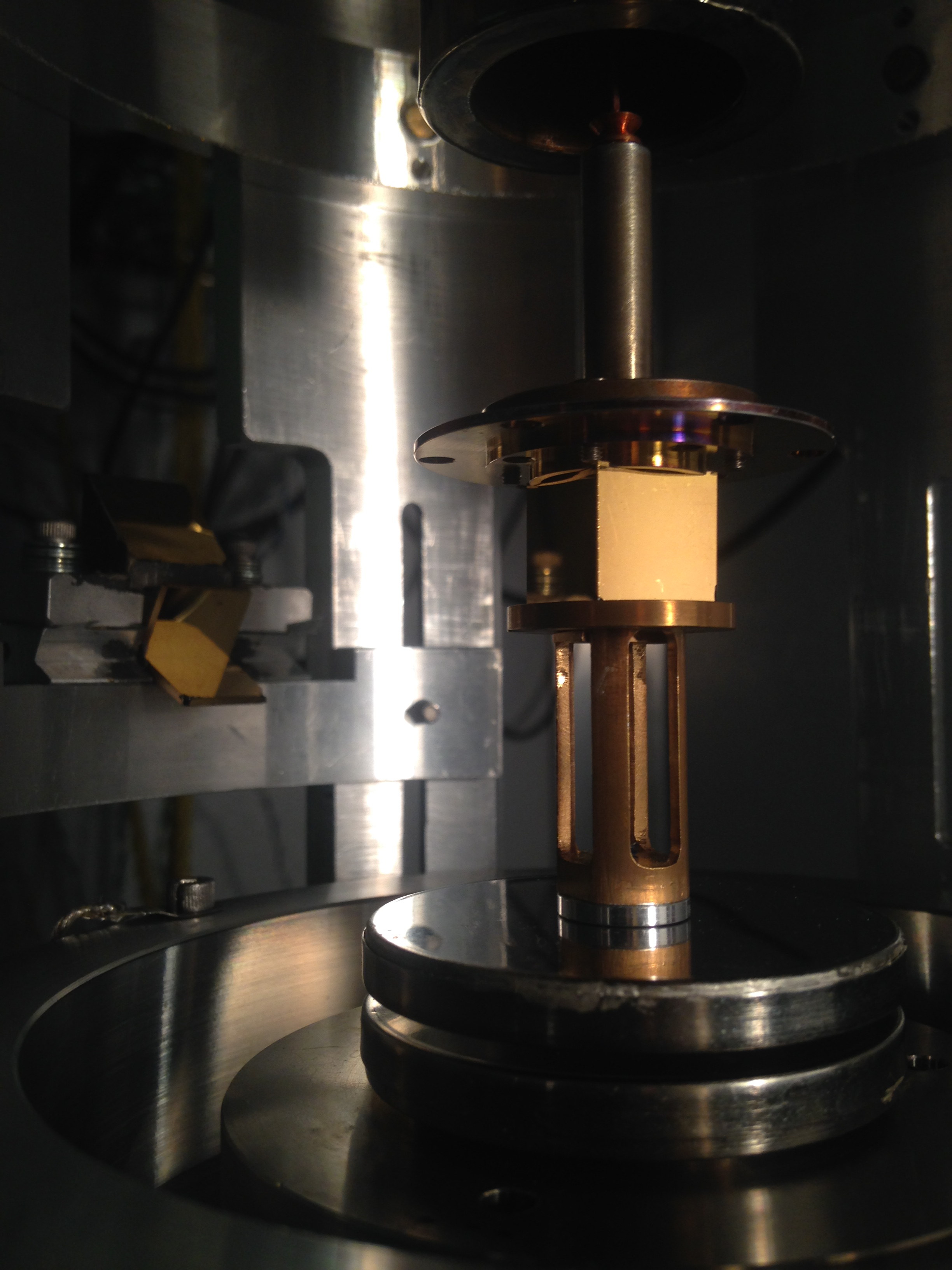New Spin-dependent Forces
Forces produced by the exchange of unnatural-parity bosons are spin-dependent, and vanish for unpolarized bodies. Tests for new spin-dependent forces must contend with background from the magnetization that always associated with electron or nucleon spins. We have developed electron-spin polarized test bodies and attractors that have no significant external magnetic fields. This is achieved by using toroids containing two different kinds of magnetic materials, a samarium-cobalt alloy and an iron alloy. The magnetization in iron is due essentially entirely to aligned electron spins, while only half of the magnetization in samarium cobalt is from spin, the remainder from orbital angular momentum. This allows us to make a pendulum that is a spin dipole with a negligible magnetic dipole moment.
The drawing below shows a schematic design of our "spin pendulum". Notice that the net spins of the rings are parallel, while the magnetizations of the rings alternate; in principle, the magnetization can be confined within the individual rings. The design also minimizes gravitational couplings from the small difference in densities of the two kinds of permanent magnet. The internal field inside the rings is 9500 Gauss, while the field 1 cm from the surface of the pendulum is only 4 mGauss. This residual field is further reduced by a mu-metal shield.

New Short-Range Spin-dependent Forces
In a similar method to the short-range inverse square law testst, a short-range spin dependent test can be performed searching for massive pseudo-scalar bosons. We developed electron-spin polarized test bodies and attractors that have no significant external magnetic fields in a similar method to the long-range search but with a ten-fold alternating pattern of samarium-cobalt and AlNiCo magnets. The experiment makes use of a rotating ten-fold symmetric wedge-shaped copper mass attractor to search for monopole-dipole interactions and a ten-fold symmetric spin attractor to seach for dipole-dipole interactions.
